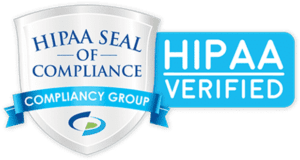Home » Healthcare Supply Chain » Hospital Cost Savings Strategy
Cost Savings Strategy for Your Hospital
Your health system needs a cost savings strategy that is linked to a bold vision for its future.
- A bold vision for healthcare cost management isn’t about incremental savings and playing small.
- A bold vision happens when you, as a leader, decide the future.
- A bold vision happens when you put a stake in the ground, declare the precise amount of annual savings your hospital needs to operate in today’s world, and then set out to create the strategy that will ensure this happens. Then, when you can manage healthcare costs effectively, you can focus your attention on providing exemplary quality of care, no matter the length of stay.
That’s What We Do at VIE Healthcare®.
At VIE Healthcare®, we have helped hospitals save close to a billion dollars in actual, non-labor cost savings. We do this through our proprietary approach to developing cost-savings strategies, utilizing our team of margin improvement experts, and leveraging the technology we have created to ensure your success.
Strategy is hard to do alone, for any organization, much less healthcare providers. Cost savings run into all aspects of your organization and impact people, care providers, supplies, and the decisions that are being made every day.
Our team of experts will help you determine the most effective way to approach your bold vision and develop a cost savings strategy that works for your hospital.
The healthcare industry faces several payer expense difficulties. As hospital administrators struggle to scale services alongside increased patient volumes and a climbing cost of care, it’s essential to understand how health systems perform financially and establish workflows that give you insight into financial health. Healthcare leaders, clinicians, and administrators need analytics tools to better position themselves, ease financial burdens, and even improve patient outcomes. Whether you’re looking to learn about service overpayment reimbursement rates or how U.S. hospitals can use analytics to navigate their population health data about COVID-19 trends, here’s what you need to know.
Healthcare Organizations Face Hidden Costs in Critical Categories.
Across the U.S., healthcare cost solutions have to address a growing patient population while still providing value to hospital systems. Within the healthcare industry, this means that more and more brands have to focus on finding cost-savings opportunities that can empower more remarkable brand development and an enhanced patient experience. Commonly, when brands invest in healthcare cost solutions, they spot improvements in a few common categories.
To start, hospital leaders often spot spend inefficiency within clinical services. Expected healthcare costs include diagnostic services, preventative care, post-operative services, and other procedures that are integral to patient care and wellness programs. When you’re able to review the financial performance of your clinical services offerings more acutely, you’re able to realize significant savings that you’re then able to reinvest into your practice. Many hospital cost reduction strategies involve taking these savings and applying them to improved quality measures, the latest developments, and care delivery.
Another area that impacts your brand’s bottom line includes facilities and support services. Healthcare cost management solutions find ways to empower patient safety and satisfaction and preserve employee health through facilities and support services. This is necessary for your growing patient population, especially if your health system faced financial difficulty due to COVID-19. In many cases, outsourcing is an effective tactic for both facilities and support services.
While these are two of the most common areas of opportunity, there are other protocols, departments, and utilities that you can review or outsource to empower your health system’s financial wellness. These regularly include financial services, maintenance vendors, and even pharmacy or other medical services. For example, when looking for lower-cost incentives or contract reimbursement, it’s essential to review everyday health plan bills that impact your annual revenue cycle.
Cost-savings Enable you to Allocate Finances Better.
In the long run, it’s essential to leverage efficient network analytics and systems reviews to help establish better financial standards throughout your healthcare organization. When you lose profits to pricing inconsistencies, unused data or EMRs, and poor expense forecasting, it can impact how hospital executives perform, lead to incorrect diagnoses, and even cause on-premises layoffs due to mounting financial hardship. Because of COVID-19, it’s more important now than ever for health systems to review financial performance, establish contingency plans for interim management, and accurately examine contract line items to find additional revenue opportunities.
With this additional capital, clinicians throughout the United States can reinvest funds into new specialties, network access tools, and more satisfactory patient visits. Healthcare innovations can also help you improve staffing quality, invest more in employee benefits, and attract top industry talent. So whether you run a telehealth practice or you manage a team of clinicians and nurse practitioners in a rural hospital, you must invest in cost-savings opportunities that can more capably empower your brand to make impactful financial decisions.
To learn more about how United States healthcare organizations, vendors, and case managers navigated hospital spending and located cost reductions, contact VIE Healthcare Consulting. We’ll work with your healthcare organization to find important revenue adjustments, make impactful financial health decisions, and improve patient care standards.
Three Ways to Work with VIE Healthcare
- Benchmark a vendor contract – either an existing contract or a new agreement.
- We can support your team with their cost savings initiatives to add resources and expertise. We set a bold cost savings goal and work together to achieve it.
- VIE can perform a cost savings opportunity assessment. We dig deep into all of your spend and uncover unique areas of cost savings.
This is how it Works when you Decide to Partner With us on Your Cost Savings Strategy:
You’ll receive an intake form from us with some pre-work to complete before your strategy session.
This allows us to gather background information on your hospital and prepare for your cost savings strategy. Whether you're looking to allocate extra funds toward better outcomes for patients or you need ways to streamline clinical operations while maintaining payment integrity, it's critical to note this so our team can monitor your financial health.
Next, you’ll participate in a three-to-four-hour strategy session with our team of cost savings experts.
Depending on the location of your hospital, you can do this virtually or in person. During this strategy session, we’ll explore your bold vision and have a deep cost savings conversation with stakeholders to gather and identify all cost savings opportunities aligned with your vision. It's good to involve financial executives and CFOs in these conversations so you can discuss internal best practices, disruptions, and cost regulators that can help price transparency.
From there, our team will go off and prepare your strategy. Then, we will analyze the data to determine and provide you with the most robust cost savings strategy imaginable for your hospital.
We will isolate the best strategies for the most immediate cost reduction wins and create a phased approach to helping you garner long-term cost savings, extraction of unnecessary costs, and ongoing cost management and cost protection for your hospital.
You’ll Receive a Comprehensive Cost Savings Roadmap, Presented to You and Your Team Within 14 days.
This meeting will be the kickoff to realizing the bold vision you’ve had for your hospital all along. It is the turning point when you reflect on your actions as a leader and become confident that you’re managing the finances and economics of your hospital to the absolute best of your ability to ensure the best possible patient care.



